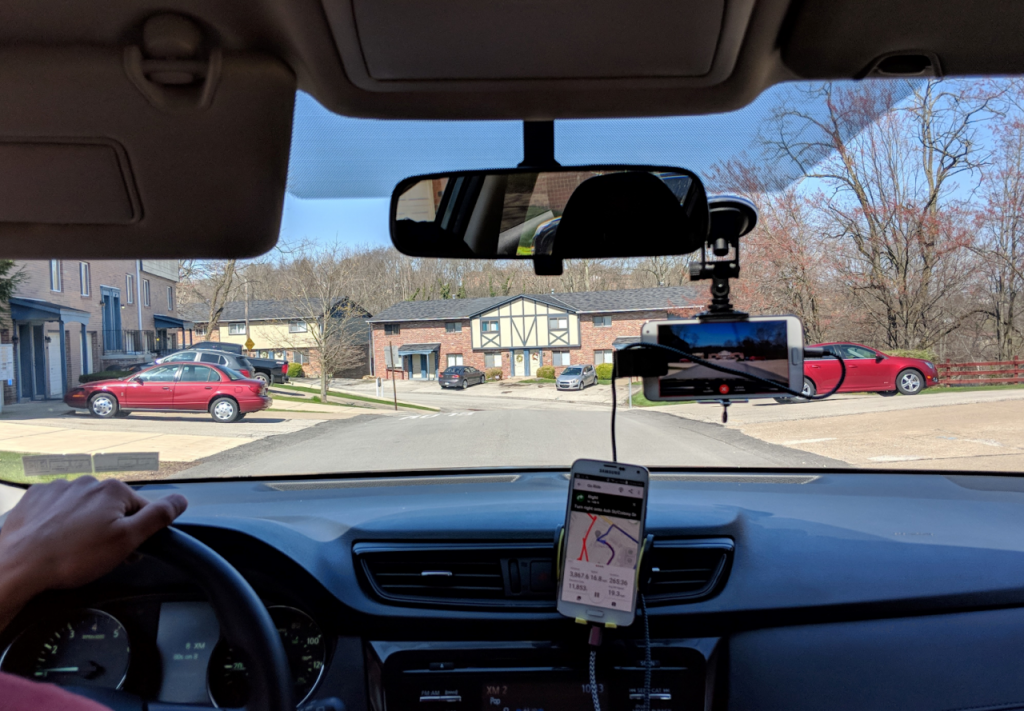This blog post was originally published at NVIDIA's website. It is reprinted here with the permission of NVIDIA.
Christoph Mertz wants to fix your bumpy ride.
His solution — using AI to detect potholes — came as a lightbulb moment inspired by working on autonomous vehicle projects at Carnegie Mellon University.
Mertz is now the chief scientist at RoadBotics, which spun out of CMU in 2016 and has since blazed a trail through more than 100 U.S. cities that have adopted its image detection technology to help monitor and improve roads.
Based in Pittsburgh, RoadBotics captures video from Android phones placed in the windshield of vehicles to assess road conditions.
The company scores roads on a one-to-five, color-coded scale. A road scoring a one and coded green suggests a smooth ride. A road scoring a five and coded red — hold onto your coffee mug! — indicates a desperate need for repairs.
To tackle the problem, Mertz enlisted his RoadBotics co-founders Mark DeSantis, an adjunct professor at CMU, and Benjamin Schmidt, a machine learning expert. The three put their heads together to try to figure out how this could be commercialized, starting conversations with local governments to discuss the benefits.
It’s worked.
“We’re providing a technology that dramatically improves the cost-effectiveness of maintenance and ultimately delivers higher-quality roads,” said Schmidt, the company’s chief technology officer.
Roadbotics is a member of NVIDIA Inception, a virtual accelerator program that helps startups get to market faster.
Potholes Meet AI
Road inspections are due for a technology makeover. Currently they’re labor-intensive, requiring city engineers to regularly walk over hundreds of miles of roads to do visual inspections and write down observations. Then, do it again and again and again.
RoadBotics offers an easier path. Trained personnel can mount an Android camera to the windshield of a vehicle and just drive the roads to capture video and GPS coordinates.
Data is piped to the cloud for RoadBotics to run through convolutional neural networks, which tap multiple workstations running NVIDIA TITAN X GPUs for on-premises deep convolutional net training as well as GPUs on Google Cloud Platform for calculating scores in the cloud to help quickly detect road conditions with image recognition.
“The size of deep convolutional nets required to bring a product like this to market affordably is largely made possible by the enormous speed and memory enhancements found in NVIDIA GPU-based architectures,” said Schmidt. “This allows us to train advanced models in a reasonable amount of time with very high accuracy.”
The startup has collected more than 2 million labeled images in its training set to help assess road conditions and is constantly adding more data.
Road to Success
The result: City engineers can obtain a detailed map and geographic information system files to view all the roads that have been driven with RoadBotics, with conditions noted.
RoadBotics provides 98 percent accuracy in assessing road conditions compared with human inspections, according to the company.
And customers keep calling.
RoadBotics in December struck a deal to access 2,600 miles of roads for Detroit, and the startup got the go-ahead to complete 700 miles of roads in Savannah, Ga.
Next up: RoadBotics is going global. The company has pilots in Australia, France, India, Malaysia and the U.K.
Scott Martin
Senior Writer, NVIDIA


